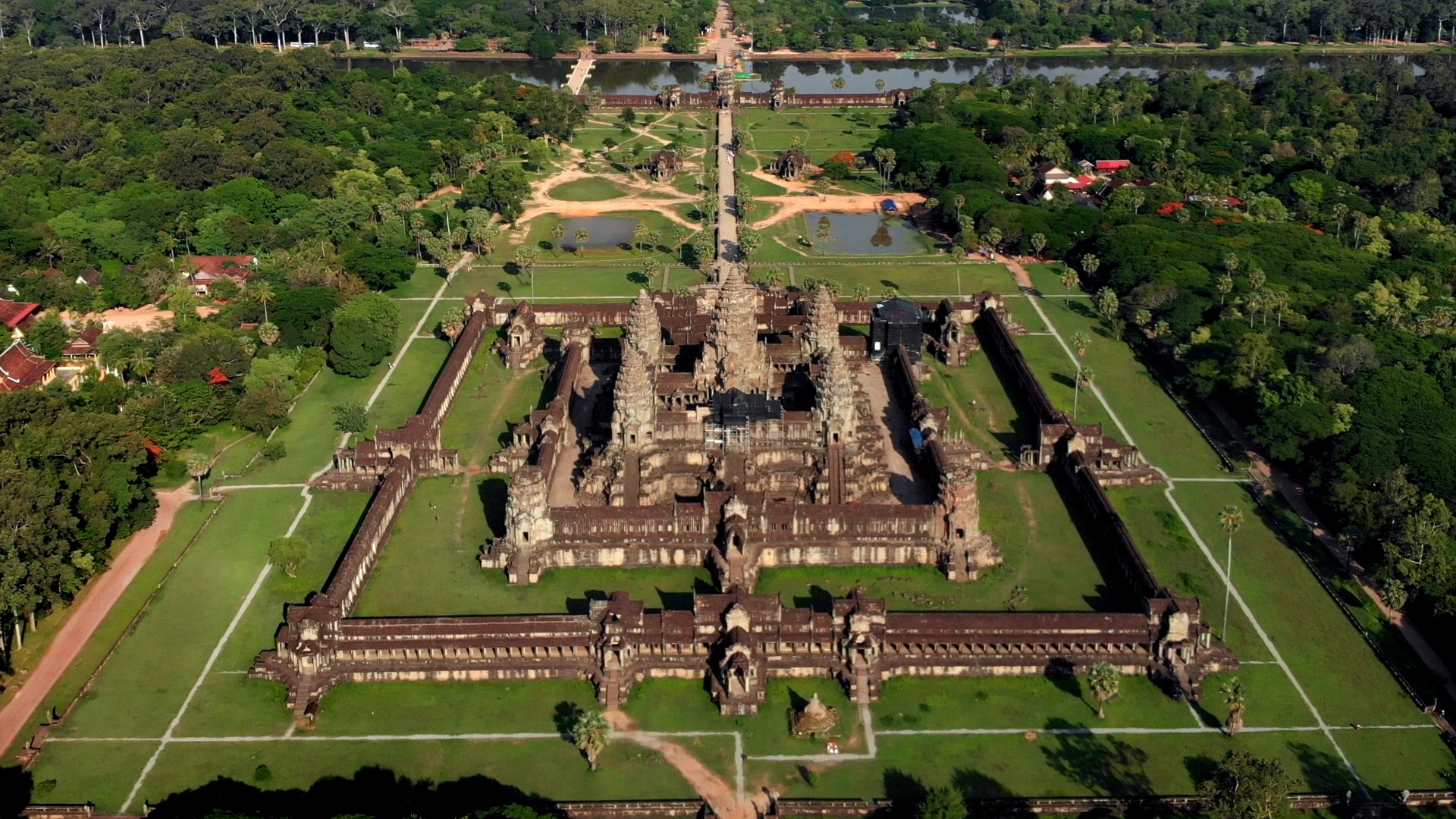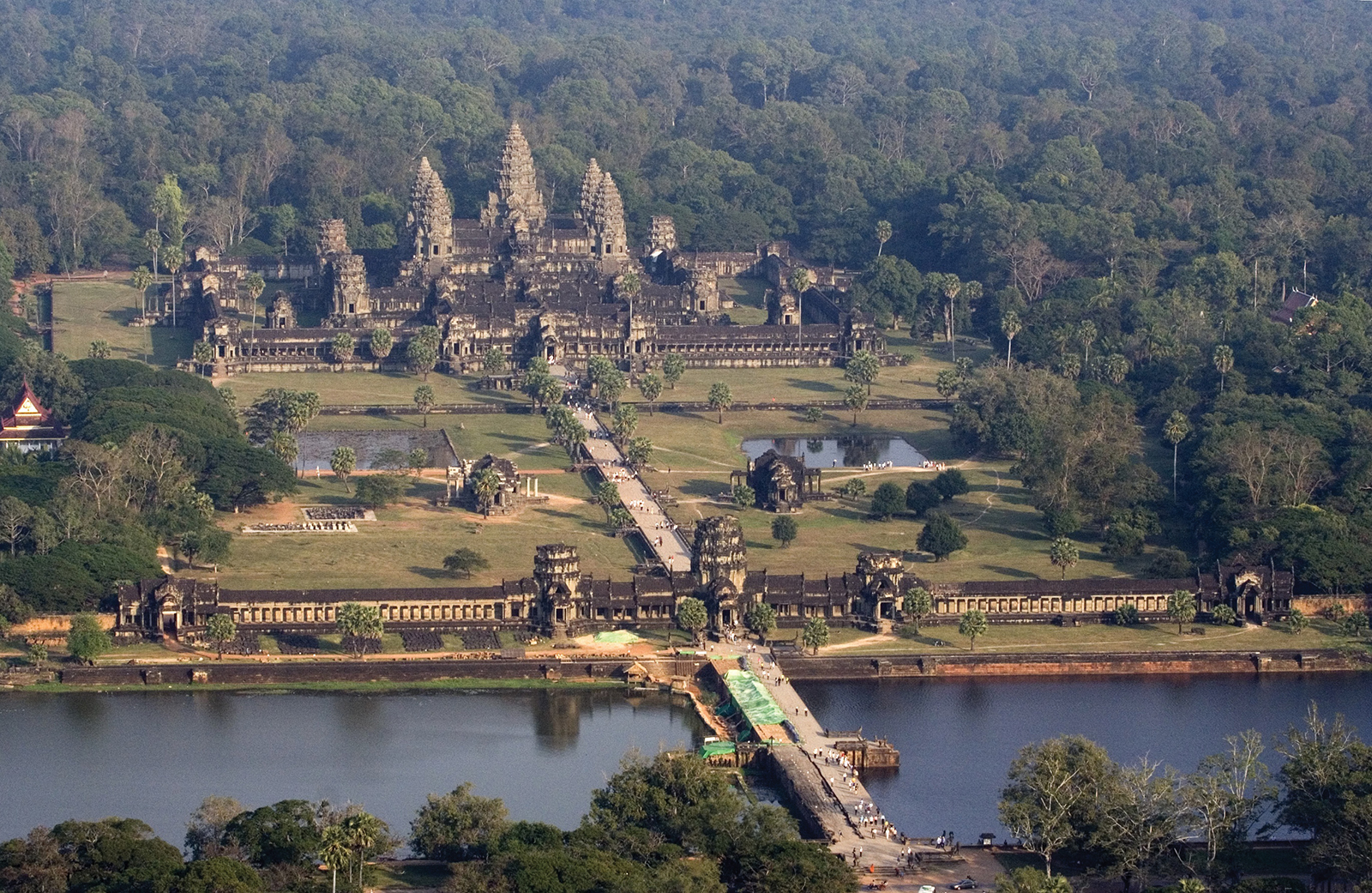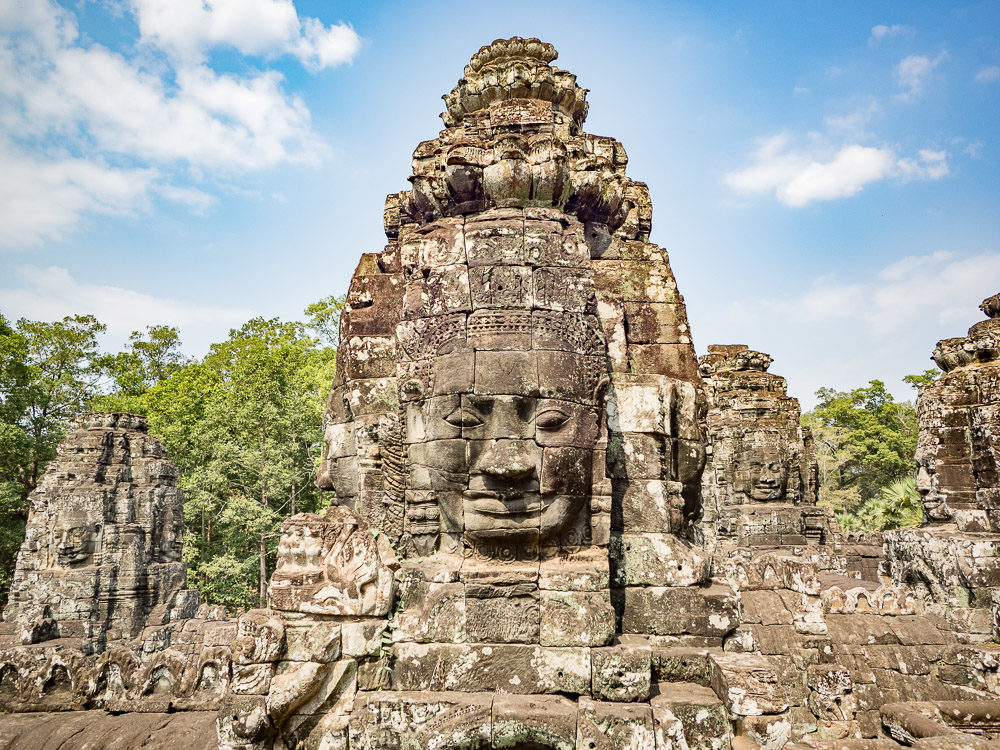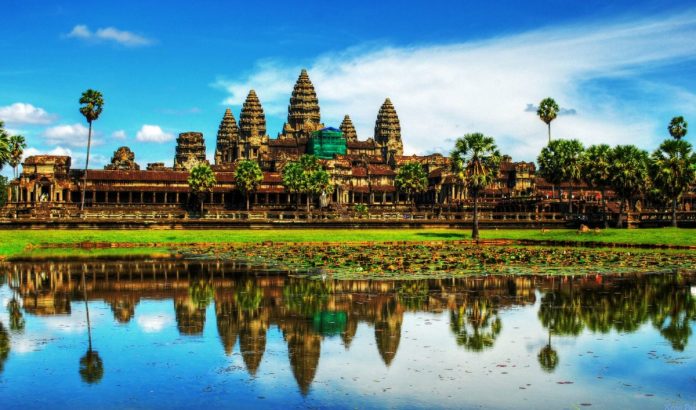We all have heard about thousands of religious monuments, but did you know about the largest religious monument in the world? The 12th-century Hindu temple complex, Angkor Wat in Cambodia, which spreads over 402 acres and it’s the largest religious monument in the world. Yes! Also, its name means ‘City of Temples’. This inspiring temple is stunning for both its grand scale area and its incredible artistic detail. It’s truly a sight to behold!
All About Angkor Wat

IImage Source: tourismcambodia.com 
Image Source: World Nomads
Built between A.D. 1113 and 1150, and encompassing an area of about 162.6 hectares (402 acres)., Angkor Wat was originally built as the Hindu temple dedicated to Lord Vishnu. At the end of the 12th century, it was converted into a Buddhist temple and statues of Lord Buddha was added to its already rich artwork. In 1992, it was added to the list of UNESCO World Heritage Sites.
Built By The Khmer King Suryavarman II
Angkor Wat was built by Suryavarman II in the era of 1112–1150. Designed to represent Mount Meru, the home of the devas in Hindu mythology. It took about 30 years to construct the temple!

Image Source: republicofvoyages 
Image Source: Pond 5
‘Wat’ is the Khmer empire’s name for the temple which was probably added to Angkor city (the empire’s capital back then). Hence, the name, Angkor Wat. Towards the end of the 12th century, it became a Buddhist monument. According to historians, King Suryavarman II may have planned the temple Angkor Wat as his funerary temple. But he was never buried there as he died in battle during a failed expedition to subdue the Dai Viet war.
Beautiful Architecture with Rectangular Galleries, 650-Foot-Wide Moat & More

The height of Angkor Wat from the ground to the top of the central tower is greater and appears 213 meters (699 feet), with three rectangular levels. The Angkor Wat temple stands on a terrace raised higher than the city. It’s made of three rectangular galleries rising to a central tower and each level is higher than the last one. The temple itself is surrounded by a 650-foot-wide (200 m) moat.
Beautifully Craved Walls

The walls of the complex are famous for having more than 3000 enchanting apsaras carved into its walls! During the 1980s, most of these were damaged during efforts to clean the temples with chemicals, but they are being restored with the German Apsara Conservation Project. According to inscriptions, the construction involved 300,000 workers and 6000 elephants!
Inside The Temple
Reaching the kingdom of gods was no easy task as stairs to the upper level of the temple are immensely steep. Also known as Bakan Sanctuary, the upper level is open to a limited number of days with a queuing system. Another major attraction is the statue of Vishnu, 3.25m in height and chopped from a single block of sandstone!

Image Source: voanews.com 
Image Source: republicofvoyages.com
The best time to visit this iconic temple is at any time of the year but the peak season is from November to February.
(Featured Image Source: wanderingtrader.com)





Outstanding post, I think website owners should acquire a lot from this weblog its rattling user friendly. So much superb info on here :D.